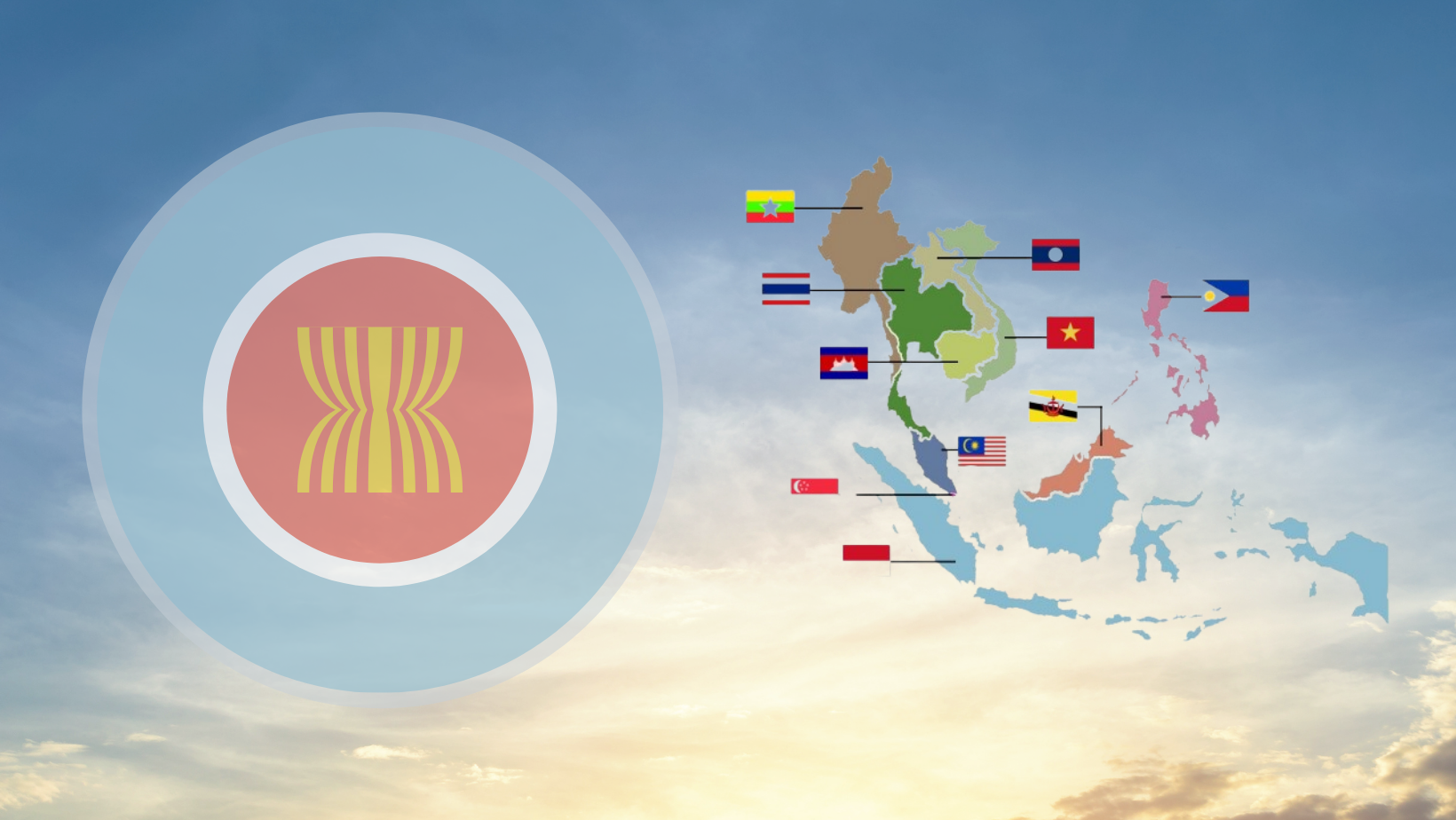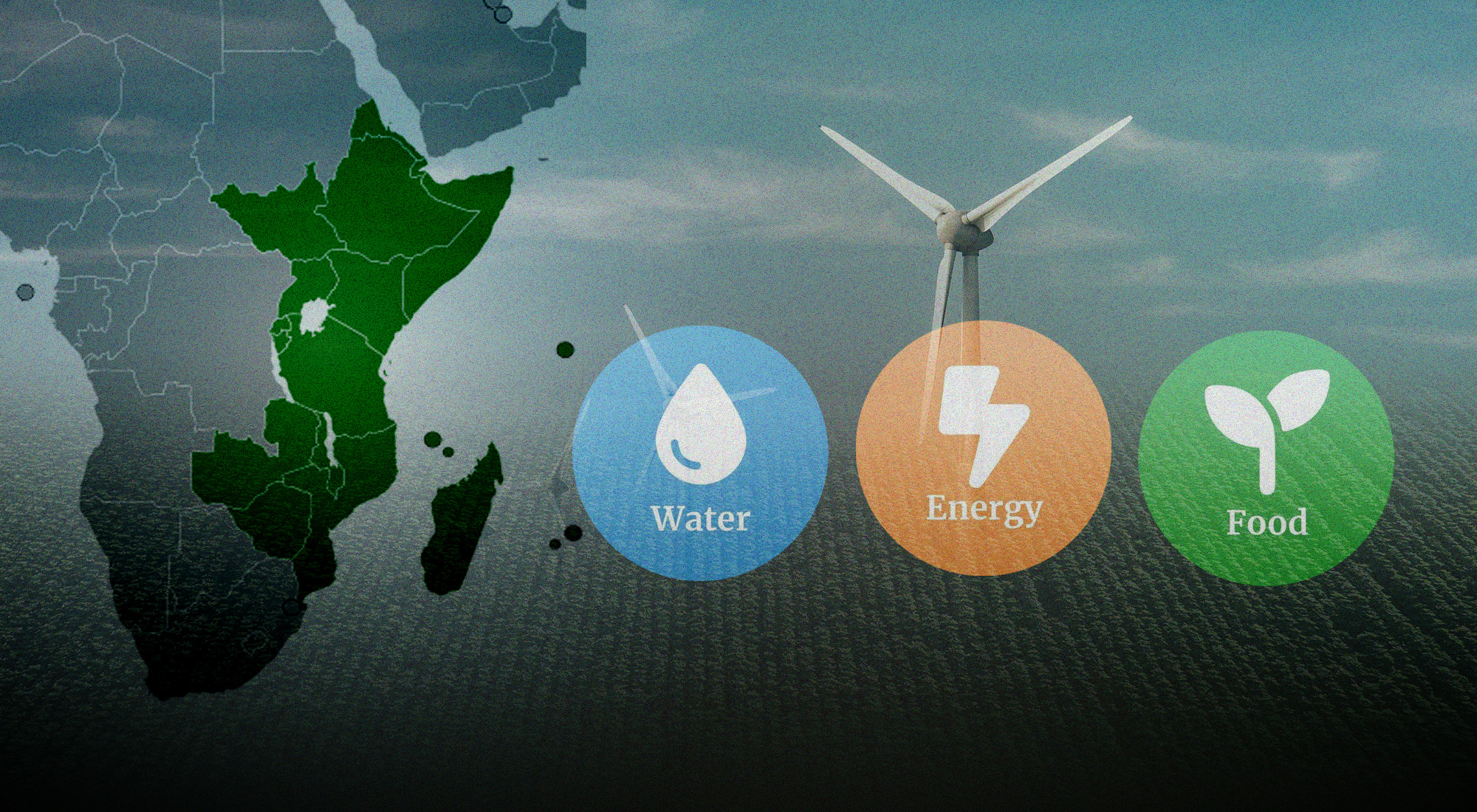Environmental Impact Assessment and its social dimensions
The notion of Environmental Impact Assessment (EIA) has its origins in the National Environment Act of 1969 of the United States of America. Though the 1992 Rio Declaration on Environment and Development (‘Rio Declaration’) embraced it, it was not until recently that it was readily understood and accepted as a valuable tool in developing countries. In particular, EIA is a method of assessing the potential negative impacts of an activity or project on the people and the environment. In reality, it assesses the risks, forecasts the future, and considers mitigation methods. The International Association for Impact Assessment describes the process of EIA as identifying, forecasting, assessing, and mitigating the biophysical, social, and other relevant consequences of development plans prior to key decisions and commitments.[1] As a result, a good EIA effectively assesses both the environmental and social impacts of any public or private activities that affect how people live, work, play, interact, organize to satisfy their needs, and generally cope as members of a society.[2] As such, an effective EIA includes the assessment of the impact on the natural environment and the social impact. Evaluating these risks is called a Social Impact Assessment (SIA). SIA traces some of its origins to the National Environmental Policy Act (NEPA) passed by the United States of America Congress in 1969.
SIA[3] – integrated or combined with EIA (which changes the acronym to ESIA) – can be seen as an interdisciplinary approach to the risk assessment of a planned activity. The International Court of Justice (ICJ) has ruled that an EIA must be carried out in a transboundary context and “…that it may be considered a requirement under general international law to undertake an environmental impact assessment where there is a risk that the proposed industrial activity may have a significant adverse impact in a transboundary context….”[4] This ICJ ruling increases the level of effectiveness and enforcement of environmental law at the international level. Besides that, the ICJ held that “general international law [does not describe] the scope and substance of an environmental impact assessment,” and that “general international law [does not specify] the manner in which governments must comply with this requirement.”[5] Because there are no explicit necessary standards or precise procedures for the states to follow while undertaking the process of an EIA under customary law, treaty law and national implementation are in a unique position to set particular norms.
It should be noted that every nation develops in a unique manner, with its own historical processes, and that this fact applies equally to environmental preservation – for example, this element may be seen within the ASEAN framework, which is elaborated on below. It is not just environmental ideals and aims that impact how EIA is carried out, but also political and economic components and concerns, as well as multiple ideologies in certain cases. With reference to the latter, women are often excluded from EIA public participation exercises as a result of their marginalization for social and cultural reasons and due to the strong influence of ideologies, and sociocultural or religious beliefs.[6] A relevant example of political and economic choices could be identified in the palm oil monoculture that induces severe soil erosion and biodiversity loss. The world’s largest producer and exporter of palm oil is Indonesia. The country produced 48.3 million metric tons of this commodity in 2020. Low fertilizer use and dry weather in 2021 were expected to lead to a flat production volume to the detriment of sustainable development policies.
The ASEAN context
Before delving into an analysis of the main aspects of EIA in the ASEAN context, some observations of a general character are needed on this organization. ASEAN is commonly recognized as a successful regional intergovernmental organization involving ten Southeast Asian Member State signatories of the 1967 Bangkok Declaration (also known as the ASEAN Declaration). Time has shown that ASEAN was and is capable of providing substantial contributions to, among other things, the political development and the economic and socio-cultural progress of the region.
For the scope of this paper, it is essential to highlight that the ASEAN Charter reserves special attention to environmental protection and sustainable development, having consideration for the generations to come. In fact, according to Article 1(9), one of the primary purposes of ASEAN is to “promote sustainable development to ensure the protection of the region’s environment, the sustainability of its natural resources, the preservation of its cultural heritage and the high quality of life of its people.”[7] This is a special provision because it augments the green awareness in ASEAN. Due to the transboundary haze event,[8] ASEAN was criticized because of its ambiguous political will in establishing “a just and equitable environmental order”[9] and in implementing the ASEAN Agreement on Transboundary Haze Pollution. As Simon Tay noted: “If this agreement is not effectively implemented, this will reflect badly on ASEAN. The question of credibility for Indonesia and ASEAN goes beyond environmental issues. Questions will arise about both the economic integration and dynamism of the region and the prospects for building a community of peace and security.”[10] Thus, it is arguable that ASEAN is trying to adopt a holistic approach considering the intersection that involves the environment, economy, and human security.
In the past, most of the ASEAN Member States considered EIA as just another bureaucratic stumbling block or straitjacket on the path of development. However, the need for EIAs has become increasingly pressing, and it is now a statutory requirement in many countries. And yet, the ASEAN Charter helped shape a new view of EIA as an essential tool in creating the necessary conditions for sustainable economic growth, preventing significant environmental harms.
Throughout the world, National Environmental Policy Acts have been introduced in more than 100 countries since 1969. [11] Among the first ASEAN countries to adopt environmental assessments of projects were Singapore in 1972, Thailand in 1975, and the Philippines in 1977, each using different legal and political instruments with a different discernible level of implementation.
| ASEAN Member Country | Year of Adoption[12] | Level of implementation[13] |
| Singapore | 1972 | Policy but no legislation |
| Thailand | 1975 | Legislation |
| Philippines | 1977 | Presidential Decree |
| Malaysia | 1987 | Order |
| Viet Nam | 1993 | Legislation |
| Indonesia | 1997 | Legislation |
| Cambodia | 1999 | Sub-Decree |
| Laos PDR | 1999 | Legislation |
| Brunei | 2012 | Decree |
| Myanmar | 2014 | Legislation |
At the domestic level, the ASEAN Members adopted different models of EIA law. It is possible to divide them into four distinct groups: (i) Malaysia, Cambodia, and the Philippines have an EIA law comprehensive of screening lists of projects requiring EIA, procedural rights (e.g., public participation, access to information, and access to justice), and an Environmental Management Plan; (ii) Indonesia, Myanmar, and Vietnam follows a similar structure to the first group, with the addition of one more component, namely the Strategic Environmental Assessment; (iii) Thailand, Laos, and Brunei also give considerable importance to the application of a transboundary EIA; (iv) Singapore has no EIA law, but it does have a very well-outlined Environmental Management Plan.
However, ASEAN countries are oriented towards adopting an anthropocentric[14] approach,[15] assuming that environmental protection is not an end in itself; still, it is linked to the protection of human security.[16] From that perspective, the ASEAN follow the Asian Development Bank (ADB) that has provided its Member States with general guidance on EIA, incorporating social issues in the assessment process (development of the role of women, cooperation with NGOs, human resource development, health and population, involuntary resettlement, poverty alleviation, indigenous people). The focal point of SIA is to assist and help communities and other stakeholders identify development goals and ensure that positive outcomes are maximized. Without a shadow of a doubt, the ADB considers it fundamental to integrate SIA – that is a substantive link to human rights – with EIA.[17]
Within the ASEAN context, the procedural rights in the EIA procedure – as laid down in international law (e.g., Aarhus Convention[18]) – are widely accepted. Procedural rights are essential and must be included in the EIA process. They help link the process with more substantive elements, such as human and environmental rights, which influence the final decision in that direction. The author’s opinion is that ASEAN countries can follow the provisions of the International Law Commission (ILC) Report 2001 that tackles access to information, participation, and access to justice for the public in the Articles on Prevention of Transboundary Harm from Hazardous Activities. The ILC Report with commentaries[19] considers Principle 10 of the Rio Declaration and the Aarhus Convention.[20] It explicitly mentions public participation and access to information within the framework of Environmental Impact Assessment 18, which are applicable in the ASEAN context.
Broadly speaking, the EIA process has played an increasingly important role in fostering sustainable development in Asia, as ASEAN countries experience rapid economic growth and associated infrastructure and industrial development. Most ASEAN countries (with the exception of Singapore) have already implemented EIA systems, but there are still several challenges to overcome with regards to the systems themselves and the way they are implemented. Besides that, one immediate benefit that has been observed in countries like Indonesia is that the level of transparency and accountability in administrative procedures has increased. Throughout the EIA and environmental permit processes, public consultation is welcome at any time. In the Terms of References (TOR)/EIA preparation process, the public has ten working days to express its views. An environmental permit holder is notified of the review outcome. A person may see all EIA documents and offer comments to the decision-maker at any point throughout the project. Therefore, the relationship between the public authority and the potentially affected people is largely improved.[21] A further example that can highlight the benefit of EIA in one country’s governance is Thailand. In order to ensure Thailand’s natural resources are utilized efficiently and for the country’s continuing economic development, EIAs have been conducted to assess a project’s effects as well as to establish appropriate mitigation measures. Of note, EIA has been used in Thailand’s mitigation and adaptation efforts to shift to organic agriculture, to build a tsunami warning system along the Andaman Sea, to construct a flood prevention wall around Bangkok, and to elaborate on an action plan to reduce greenhouse gas emissions from vehicles and energy use. Thailand’s commitment to climate policy has risen in recent years, but action is still needed to meet the country’s objectives. The Climate Change Act, Power Development Plan, Long-Term Low Greenhouse Gas Emissions Development Strategy, and National Energy Plan, which calls for a carbon-neutral energy sector by 2065-2070, are all being drafted in Thailand. The country’s climate ambition and emissions trajectory are at a crossroads since the specifics and objectives in these next plans will shape the country’s climate strategy for the foreseeable future. Through the implementation of EIA, it would be possible to strengthen climate goals and to deliver new investment incentives for Carbon Capture Utilization and Storage.
In Laos, an Environmental Protection Law was passed in 1999 to serve as a framework for the sustainable management of the country’s natural resources, and an Environmental Impact Assessment Regulation was passed in 2000 to assist in the facilitation of this process and the achievement of sustainable development goals. Although the implementation of an environmental impact assessment system is critical for the reduction and mitigation of the predicted consequences of development projects, the extent to which it can be utilized successfully to promote sustainability is increasingly being questioned. The problems of environmental impact assessments are political rather than technical in nature, and if EIAs are to become more than a routine ritual, changes in the attitudes and actions of political leaders and public officials will be required. This is especially true in Laos, where hydroelectric activities along the Mekong River are carried out. It is increasingly difficult to develop and run a hydroelectric power plant without causing significant environmental damage. The EIA system in Laos must be strong and efficient in order to guarantee that these negative environmental and social consequences are mitigated to the greatest extent possible. Without an effective legal system in place, is it not only hard to operationalize an EIA system and manage the consequences of hydropower development, but also impossible to achieve the goal of sustainable development. The findings of this strategic insight refer to five major issues: 1) inconsistencies between laws and their application; 2) poor inter-governmental relations among those implementing the EIA system; 3) lack of adequate funding; 4) unethical behavior by some developers; and finally, 5) lack of political will to fully support the EIA system and its goal of supporting sustainable development. But it should be noted that none of these problems can be considered separately; rather, they are all interconnected and paint a picture of a system that, on paper, appears to point the way toward better decision-making, but fails to do so because the factors listed above significantly reduce its potential effectiveness. In short, this strategic insight has also shown that the EIA system in some ASEAN countries (e.g., in Laos) needs improvement for it to be more effective and promote more sustainable forms of growth. By better aligning the legislative, institutional, and procedural features of their EIA system, these countries can enhance its performance and strive towards a brighter future. Consequently, it is hoped that significant changes will be made to the way EIA systems are currently working.
Conclusions
To conclude, EIA is an effective instrument for preventing environmental harm if supported by adequate political will and sufficient allocation of financial resources, and so long as developers adhere to ethical principles. As mentioned above, it is possible to consider ESIA – if EIA is integrated with SIA – as an interdisciplinary approach to the risk evaluation of a proposed activity. While the 1992 Rio Declaration has paved the way for more environmental regulations, EIA has become a settled practice among most ASEAN Countries. The goal of EIA is to provide authorities with a deep understanding of an activity and its effects on the environment and people, with a view to finding the best way to prevent, mitigate and compensate for the undesirable effects of the activity. A significant challenge consists of States finding the political will to bind themselves by the EIA and implement high standards of regulation, upon which the effectiveness of the EIA will depend. Policymakers and environmental legal advisors, both at the national and international level, could improve the status of EIA and spread awareness of this tool.
Bibliography
- Treaties, Conventions, and Declarations
ASEAN Charter, (2007).
Convention for the Protection of Human Rights and Fundamental Freedoms, (1950).
Convention on Access to Information, Public Participation in Decision-making, and Access to Justice in Environmental Matters (“Aarhus Convention”), (1998).
Declaration on Indigenous and Peoples’ Rights, United Nations, (2007).
Inter-organizational Committee on Guidelines and Principles for Social Impact Assessment, (1994).
Inter-organizational Committee on Principles and Guidelines for Social Impact Assessment, (2003).
Meeting of the Parties to the Convention on Environmental Impact Assessment in a Transboundary Context, Decision II/3: Draft Guidance on Public Participation in Environmental Impact Assessment in a Transboundary Context, (2001).
Meeting of the Parties to the Convention on Environmental Impact Assessment in a Transboundary Context, first meeting, Decision I/4, (1998).
Meeting of the Parties to the Convention on Environmental Impact Assessment in a Transboundary Context, first meeting, Decision I/3, (1998).
United Nations Charter, (1945).
United Nations Convention on Environmental Impact Assessment in a Transboundary Context, (1991).
Universal Declaration of Human Rights, (1948).
- Soft Law
Asian Development Bank, Environmental Impact Assessment Guidelines, (2003).
Stockholm Declaration, (1972).
The Rio Declaration on Environment and Development, (1992).
UNEP Goals and Principles of Environmental Impact Assessment, (1987).
UNEP: Environmental Impact Assessment and Strategic Environmental Assessment: Towards an Integrated Approach, (2008).
- ILC Articles
ILC Report GA A/56/10, (2001) Articles on Prevention of Transboundary Harm from Hazardous Activities, with Commentaries, (2001).
- Textbooks and Articles
Barrow, C.J. (2000). Social Impact Assessment: An Introduction. London.
Becker, H.A. & Vanclay, F. (Eds.). (2003). The International Handbook of Social
Impact Assessment. Cheltenham, UK.
Birnie, P. Boyle, A. & Redwell, C. (2009). International Law and the Environment. Oxford University Press.
Burdge, R.J. (2003). The Practice of Social Impact Assessment Background. Impact Assessment & Project Appraisal, 21(2).
Burdge, R.J. (2004). A Community Guide to Social Impact Assessment (3rd ed.). Social Ecology Press.
Burdge, R.J. (2004). The Concepts, Process and Methods of Social Impact Assessment. Social Ecology Press.
Burdge, R. & Vanclay, F. (1996). Social Impact Assessment: A Contribution to the State-of-the-Art Series. Impact Assessment, 14(1).
Craik, N. (2008). The International Law of Environmental Impact Assessment. Process, Substance and Integration. Cambridge University Press.
D’Amore L.J. (1978). An Overview of SIA. In Tester, F.S. & Mykes, W. (Eds.). Social Impact Assessment: Theory, Method and Practice. Detseling Enterprises.
Dale, A., Taylor, C.N. & Lane, M. (2004). Social Assessment in Natural Resource Management Institutions. CSIRO Publishing.
Egre, D. & Senecal, P. (2003). Social Impact Assessments of Large Dams Throughout the World: Lessons Learned Over Two Decades. Impact Assessment & Project Appraisal, 21(3), pp. 215-224.
Freudenburg, W.R. (1986). Social Impact Assessment. Annual Review of Sociology 12, pp. 451-478.
Gagnon, C., Hirsch, P. & Howitt, R. (1993). Can SIA Empower Communities? Environmental Impact Assessment Review 13(4), pp. 229-253.
Gramling, R. & Freudenburg, W.R. (1992). Opportunity-Threat, Development, and Adaptation: Toward a Comprehensive Framework for Social Impact Assessment, Rural Sociology 57(2), pp. 216-234.
Howitt, R. (2005). The Importance of Process in Social Impact Assessment: Ethics, Methods and Process for Cross-Cultural Engagement, Ethics, Place & Environment 8(2), pp. 209-221.
Knox, J. (2002). The Myth and Reality of Transboundary Environmental Impact Assessment. The American Journal of International Law, 96(2).
Lane, M.B., Ross, H. & Dale, A.P. (1997). Social Impact Research: Integrating the Technical, Political, and Planning Paradigms. Human Organization 56(3), pp. 302-310.
Lockie, S.F. (2007). Deliberation, and Actor-Networks: The ‘Practical’ Implications of Social Theory for the Assessment of Large Dams and Other Interventions. Society & Natural Resources, 20(9), pp. 785-799.
Sand P. & Peel J. (2012). Principles of International Environmental Law (3rd ed.). Cambridge University Press.
Slootweg, R., Vanclay, F. & van Schooten, M. (2001). Function Evaluation as a Framework for the Integration of Social and Environmental Impact Assessment. Impact Assessment & Project Appraisal 19(1), pp. 19-28.
Taylor, C.N., Bryan, H. & Goodrich, C.G. (2004). Social Assessment: Theory, Process, and Techniques. Social Ecology Press.
Tilt, B., Braun, Y. & He, D. (2009) Social Impacts of Large Dam Projects: A Comparison of International Case Studies and Implications for Best Practice. Journal of Environmental Management 90 (Supplement 3), pp. S249–S257.
Vanclay, F. (2002). Social Impact Assessment. In Tolba, M. (Ed.). Encyclopaedia of Environmental Change: Responding to Environmental Change (Vol. 4 ). Wiley, pp. 387-393.
Vanclay, F. (2002). Conceptualizing Social Impacts. Environmental Impact Assessment Review 22(3), pp. 183-211.
Vanclay, F. (2004). The Triple Bottom Line and Impact Assessment: How Do TBL, EIA, SIA, SEA and EMS Relate to Each Other? Journal of Environmental Assessment Policy & Management 6(3), pp. 265-288.
Vanclay, F. (2006). Principles for Social Impact Assessment: A Critical Comparison between the International and US Documents. Environmental Impact Assessment Review 26(1), pp. 3-14.
References
[1] International Association for Impact Assessment official website, available at https://www.iaia.org/eia-index-of-websites.php.
[2] Brown, R.H., Baker, D.J., & Schmitten, R.A. (1994). Guidelines and Principles for Social Impact Assessment. The Interorganizational Committee on Guidelines and Principles for Social Impact Assessment.
[3] It has been pointed out by D’Amore that specifically SIA could be “an attempt to predict the future effects of policy decisions (including the initiation of specific projects) upon people, their physical and psychological health, well-being and welfare, their traditions, lifestyle, institutions, and interpersonal relationships.” See, D’Amore L.J. (1978). An Overview of SIA. In Tester, F.S. & Mykes, W. (Eds.). Social Impact Assessment: Theory, Method and Practice. Detseling Enterprises.
[4] Pulp Mill Case (Argentina v. Uruguay), Judgement, I.C.J. Rep. 113 (2006).
[5] Pulp Mill Case (Argentina v. Uruguay), Judgement, I.C.J. Rep. 113 (2006), para 205.
[6] Nguyen,L., Resurrección, B.P., Nguyen, Y., Pham, H., Daniel, R., & Nguyen, H. (2016). Women’s Participation in EIA’S In Vietnam: What Are The Benefits? Inford. http://inford.org/womens-participation-in-eias-in-vietnam-what-are-the-benefits/.
[7] Association of Southeast Asian Nations (ASEAN). (2007). Charter of the Association of Southeast Asian Nations. https://www.refworld.org/docid/4948c4842.html.
[8] Transboundary haze means regional transboundary haze pollution from forest and/or land fires. See The ASEAN Secretariat. (2021). Roadmap On ASEAN Cooperation Towards Transboundary Haze Pollution Control with Means of Implementation. https://asean.org/wp-content/uploads/2021/08/Roadmap-on-ASEAN-Cooperation-towards-Transboundary-Haze-17-Feb-21.pdf.
[9] Karim, S. (2008) Future of the Haze Agreement – Is the Glass Half Empty or Half Full? Environmental Policy and Law, 8 (6), pp. 328-334.
[10] Professor Simon Tay affirmed that during the coursework on International Environmental Law and Policy at the Law School of the National University of Singapore 2017/2018.
[11] Harvey, N., & Clarke, B. (2012). Environmental Impact Assessment in Practice. Oxford University Press, p.11.
[12] Ke, J., & Gao, Q. Only One Mekong, Developing Transboundary EIA Procedures for the Mekong Basin, Pace Environmental Law Review, 30 (3), p 957.
[13] Many of these have now changed. The table only reflects the introduction of EIA into the domestic context.
[14] Sands, P., & Peel, J. (2012). Principles of International Environmental Law. Cambridge University Press.
[15] For a more comprehensive approach to SIA, see Vanclay, F. (2003). International Principles For Social Impact Assessment. Impact Assessment and Project Appraisal, 21 (1).
[16] The UN General Assembly in 1968 recognized the relationship between the quality of the human environment and the enjoyment of basic rights (UNGA Res. 2398/1968).
[17] Asian Development Bank. (2003). Environmental Impact Assessment Guidelines. https://www.adb.org/sites/default/files/institutional-document/32635/files/environmental-assessment-guidelines.pdf.
[18] It was concluded as part of the UN ECE “Environment for Europe” process. It entered into force on 30 October 2001, and has been recognized as having global significance for the promotion of environmental governance. See, Craig, D. G., & Jeffery, M. I. (2010). Non-lawyers and Legal Regimes : Public Participation for Ecologically Sustainable Development. In D. K. Leary & B. Pisupati (Eds.), The Future of International Environmental Law.
[19] International Law Commission. (2001). Articles on Prevention of Transboundary Harm from Hazardous Activities, with commentaries (GA A/56/10).
[20] International Law Commission. (2001). Articles on Prevention of Transboundary Harm from Hazardous Activities, with commentaries ( GA A/56/10: Commentary to article 13(4) and 13 (5)).
[21] Affected people nowadays have the right to access information, to take part in the procedure and to push for justice in environmental matters. These could be individuals or groups but also associations and non-governmental organizations that advocate for environmental protection, i.e., people that have an “interest in the environmental decision-making procedures” related to the realization of a project.








